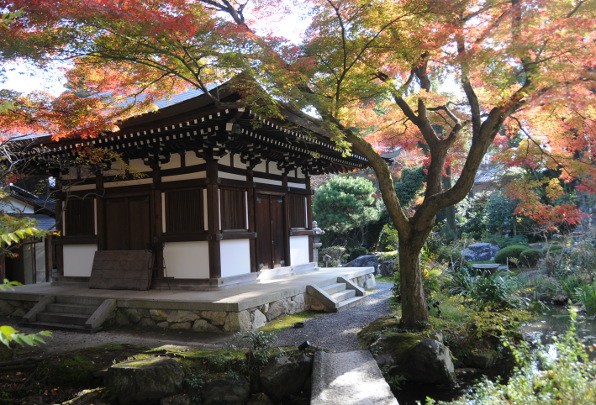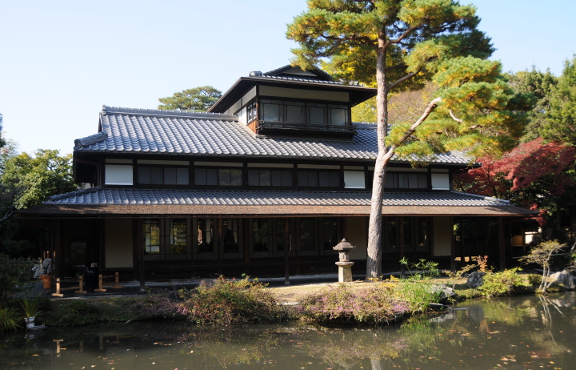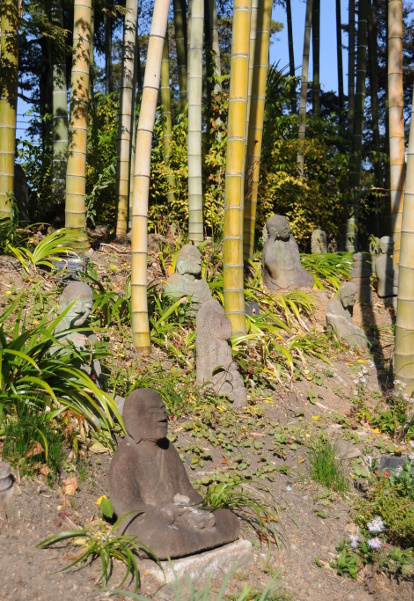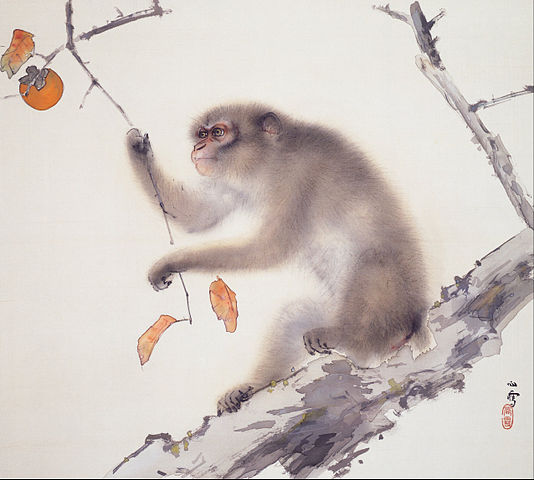Kyoto has lots of beautiful Japanese gardens, and there’s only so much time to visit them all. Last week, in the peak of the momiji season, I took time out to visit Hakusasonso, a private garden near Ginkakuji temple. I had passed by there many times before, but now I finally went in.
 The Hakusasonso is the former residence of Kansetsu Hashimoto, a nihonga painter of the Taisho and early Showa period. He bought the site in 1913 when it was nothing more than rice paddies. Until his death in 1945, he worked on the 7400 square metres that make up the gardens now and most of it – including the buildings – are unchanged. Today, the garden is still in possession of the Hashimoto family.
The Hakusasonso is the former residence of Kansetsu Hashimoto, a nihonga painter of the Taisho and early Showa period. He bought the site in 1913 when it was nothing more than rice paddies. Until his death in 1945, he worked on the 7400 square metres that make up the gardens now and most of it – including the buildings – are unchanged. Today, the garden is still in possession of the Hashimoto family.
 There are five old buildings in the garden, two small tea houses, one private Buddhist temple, and the old residence that is now used as an expensive kaiseki restaurant. The most interesting building is called zonkoro, it is essentially one very large hall that Hashimoto used as his studio. All four walls have large glass windows, and you can see almost all of the garden from the studio.
There are five old buildings in the garden, two small tea houses, one private Buddhist temple, and the old residence that is now used as an expensive kaiseki restaurant. The most interesting building is called zonkoro, it is essentially one very large hall that Hashimoto used as his studio. All four walls have large glass windows, and you can see almost all of the garden from the studio.
 Not only did he paint, Hashimoto also designed the buildings and the garden himself. He collected stone lanterns, pagodas, and Buddha statues (many from China) and placed them throughout the garden. Especially lovely is the little hill where Buddha statues meditate underneath large bamboos.
Not only did he paint, Hashimoto also designed the buildings and the garden himself. He collected stone lanterns, pagodas, and Buddha statues (many from China) and placed them throughout the garden. Especially lovely is the little hill where Buddha statues meditate underneath large bamboos.
 At one end of the garden there is the museum, a modern, two storey building where Hashimoto’s works are displayed. From the second floor of the museum, one can overlook the whole garden, and with the borrowed landscape of Mount Daimonji in the back, the scenery is made perfect. In the late 19th and early 20th century, Nihonga was a special style of painting that combined Western painting methods and ideas with Japanese materials and aesthetics. Nowadays, most Japanese painters work in truly Western style, and the distinction to Nihonga has all but disappeared.
At one end of the garden there is the museum, a modern, two storey building where Hashimoto’s works are displayed. From the second floor of the museum, one can overlook the whole garden, and with the borrowed landscape of Mount Daimonji in the back, the scenery is made perfect. In the late 19th and early 20th century, Nihonga was a special style of painting that combined Western painting methods and ideas with Japanese materials and aesthetics. Nowadays, most Japanese painters work in truly Western style, and the distinction to Nihonga has all but disappeared.

